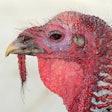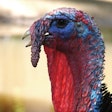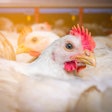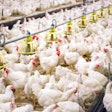As the Chinese population undergoes substantial changes in demographics, the poultry industry must in turn reinvent itself in order to adapt to those changes, Mark Lyons, Alltech vice president of corporate affairs, said at International Poultry Forum China. The younger Chinese generation is more urban based, has more wealth, is globally-minded and wants to be more informed about the food it consumes.
"This new dawn is something we must take very, very seriously. We must change the way we were thinking, the way we were acting, and we must move much, much faster than we were before," said Lyons.
Prior to the turmoil that came with the avian influenza outbreaks earlier in 2013, poultry consumption in China had been growing significantly. About 6 percent of all meat consumed in China in the early 1980s was chicken, but that percentage grew to more than 25 percent up until 2013. Lyons believes than in spite of recent avian influenza fears, that percentage can still grow.
But in order to resume growth in China, the poultry industry needs examine all parts of the supply chain. Better animal health, reduced mortality rates and leaving a better impact on the environment are all necessary to regain consumer confidence. The products sold must also be safe and nutritious.
And while these are things the industry knows the consumers want, the industry must also create new demands and develop more value-added products.
"People don't always know what they want. Those are the things we must create," Lyons said.

















